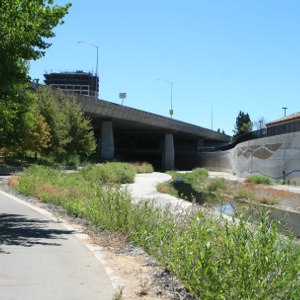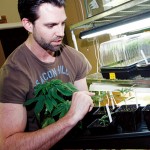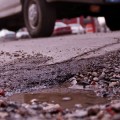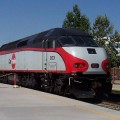Despite the rising price of gasoline or overcrowding on the highways, California is a car state. That makes a new report by Transportation For America all the more disconcerting. Just months ago, SanJose.com posted a story about how San Jose has the worst roads in the nation, with 64 percent of the city’s roads in poor condition. The bridges are in slightly better shape, but not by much.
First the definition. For the purposes of this report, a bridge is defined as any structure 20 feet or longer, which can accommodate automobile traffic. It is an expansive definition, that includes much more than the iconic Golden Gate Bridge in San Francisco. It does include virtually any road crossing the Guadeloupe River, or any other creek and stream dissecting the city.
According to the report, almost 20 percent of the city’s bridges qualify as being “structurally deficient,” meaning that at least one section of the span has been been subject to significant wear and should be monitored. In contrast, structurally deficient bridges make up 12.8 percent of all of California’s bridges, and just 11.5 percent of bridges nationwide. If those numbers are troubling enough, the transportation infrastructure in San Jose and Santa Clara County is in a real state of crisis.
The problem is simply a factor of age, much like it is with the city’s roads and highways.“We built a massive amount of infrastructure in ‘50s, ‘60 and ‘70s,” said Hans Larsen of the San Jose Department of Transportation, describing the situation of the roads. “These roads are now 50 years old and need major work.”
The problem with that is the cost. Just fixing the 18 percent of roads that are in the worst condition would cost the city $250 million. Likewise, the new report on bridges says that the state of deterioration there is far beyond any funding available from the state.
Nevertheless, the problem is real. The 182 structurally deficient bridges in all of Santa Clara County carry 5,804,761 vehicles per day (vehicles normally cross more than one bridge). In contrast, the I35W Bridge that collapsed in Minnesota in 2007 carried 140,000 vehicles per day.
Stuart Cohen, Executive Director of TransForm, believes that given these statistics, the city and state should focus their energies on repairing and maintaining existing transportation infrastructures, rather than building new roads and bridges. “Federal transportation funding needs to focus on fixing what we already have,” he states. He also thinks that the promotion of alternative methods of transportation like cycling and public transportation can help to alleviate the problem. Current traffic levels only exacerbate existing structural deficiencies, so that the prospect of delaying repairs will only make them more costly.

 Mayor Defends eBay Option for Medical Marijuana Permits
Mayor Defends eBay Option for Medical Marijuana Permits 

